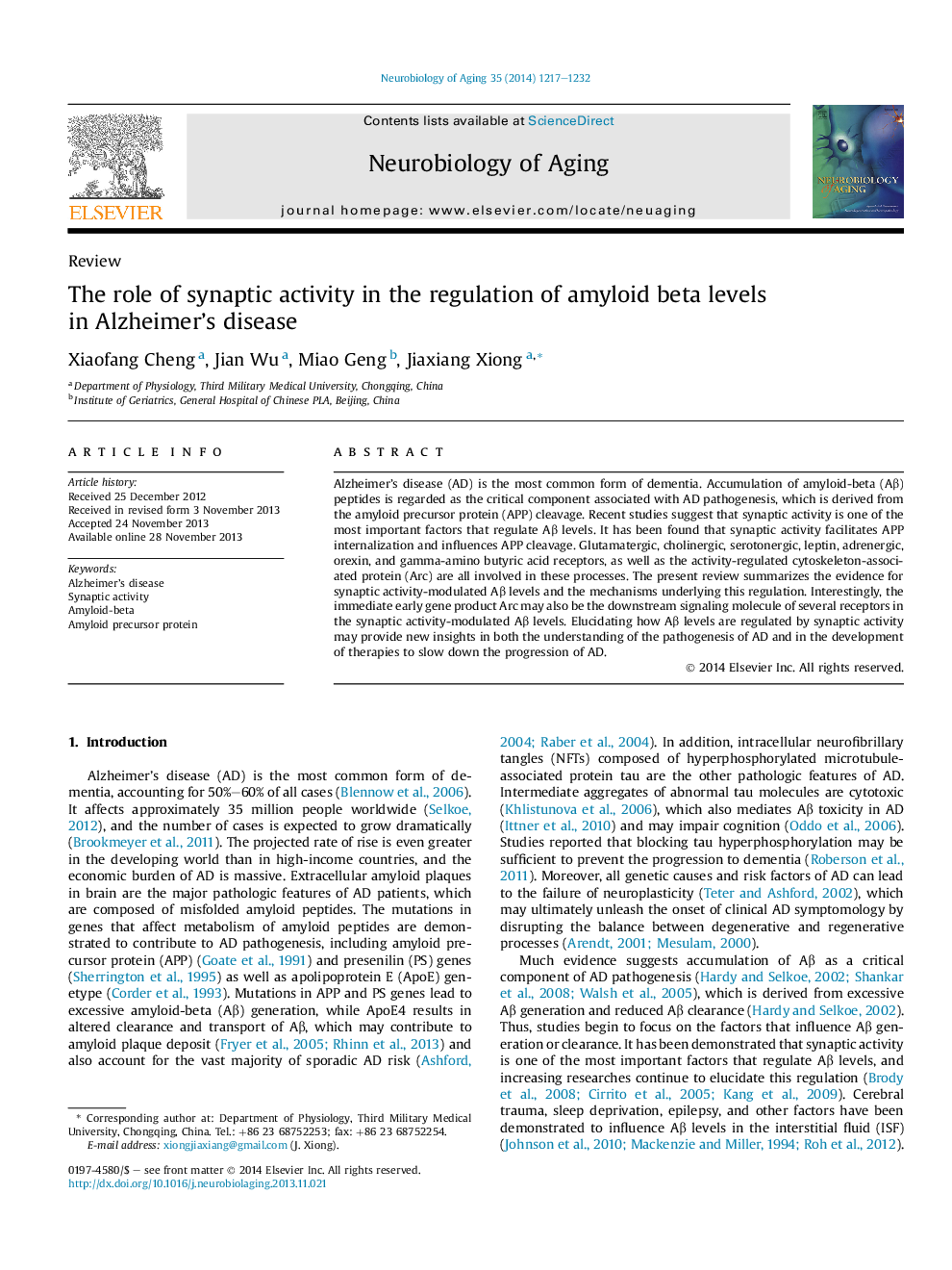| Article ID | Journal | Published Year | Pages | File Type |
|---|---|---|---|---|
| 6805811 | Neurobiology of Aging | 2014 | 16 Pages |
Abstract
Alzheimer's disease (AD) is the most common form of dementia. Accumulation of amyloid-beta (Aβ) peptides is regarded as the critical component associated with AD pathogenesis, which is derived from the amyloid precursor protein (APP) cleavage. Recent studies suggest that synaptic activity is one of the most important factors that regulate Aβ levels. It has been found that synaptic activity facilitates APP internalization and influences APP cleavage. Glutamatergic, cholinergic, serotonergic, leptin, adrenergic, orexin, and gamma-amino butyric acid receptors, as well as the activity-regulated cytoskeleton-associated protein (Arc) are all involved in these processes. The present review summarizes the evidence for synaptic activity-modulated Aβ levels and the mechanisms underlying this regulation. Interestingly, the immediate early gene product Arc may also be the downstream signaling molecule of several receptors in the synaptic activity-modulated Aβ levels. Elucidating how Aβ levels are regulated by synaptic activity may provide new insights in both the understanding of the pathogenesis of AD and in the development of therapies to slow down the progression of AD.
Related Topics
Life Sciences
Biochemistry, Genetics and Molecular Biology
Ageing
Authors
Xiaofang Cheng, Jian Wu, Miao Geng, Jiaxiang Xiong,
